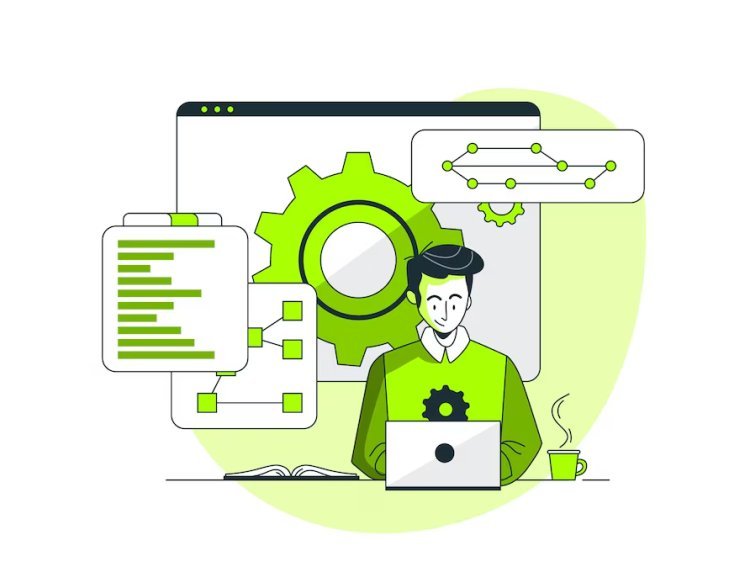How to Choose the Right ITSM Tool for Your Organization

In the modern enterprise landscape, effective IT Service Management (ITSM) tools play a critical role in streamlining IT operations and enhancing overall productivity. Selecting the right ITSM tool for your organization, however, can be a complex task, given the myriad options available in the market. To make an informed decision, you must evaluate your organization’s specific needs, assess various tools’ features, and plan for seamless integration. This guide provides a comprehensive approach to help you choose the right ITSM tool for your organization.
Step 1: Assess Your Organization’s Needs
The first step in choosing an ITSM tool is understanding your organization’s unique requirements. This involves analyzing existing IT processes, identifying pain points, and outlining goals.
1. Evaluate Current IT Processes
- Document Existing Workflows: Create a clear map of how IT services are currently managed, from incident reporting to resolution.
- Highlight Pain Points: Identify inefficiencies such as delayed ticket resolutions, lack of transparency, or communication bottlenecks.
2. Understand User Requirements
- IT Team Needs: Assess the tools your IT team requires to handle incidents, changes, and service requests efficiently.
- End-User Needs: Consider features like self-service portals, automated responses, and intuitive interfaces that improve user experience.
3. Define Your Objectives
Set clear objectives, such as:
- Reducing resolution times.
- Increasing process automation.
- Enhancing end-user satisfaction.
- Aligning IT services with business objectives.
Step 2: Define Key Features and Capabilities
Once you understand your requirements, identify the critical features and capabilities that your ITSM tool must provide.
1. Incident and Problem Management
- Efficient ticketing systems for logging, tracking, and resolving issues.
- Capabilities to identify and manage recurring problems.
2. Change and Release Management
- Tools for planning, tracking, and implementing changes to IT infrastructure.
- Version control and rollback features.
3. Service Catalog and Self-Service Portal
- A comprehensive catalog of services for end-users.
- Self-service capabilities with knowledge bases, FAQs, and automated solutions.
4. Automation and AI Integration
- Automation of repetitive tasks such as ticket routing and status updates.
- AI-powered features like predictive analytics, chatbots, and incident forecasting.
5. Reporting and Analytics
- Customizable dashboards to monitor IT service performance.
- In-depth analytics for identifying trends and optimizing processes.
6. Scalability and Customization
- Ability to scale with your organization’s growth.
- Options for tailoring the tool to specific business needs.
Step 3: Evaluate Available ITSM Tools
With your feature list in hand, it’s time to research and compare ITSM tools. Here are some factors to consider during evaluation:
1. Market Leaders vs. Niche Players
- Market Leaders: Tools like ServiceNow, BMC Helix, and Jira Service Management are popular for their robustness and extensive feature sets.
- Niche Players: Smaller or specialized tools may better cater to specific needs or industries.
2. User Reviews and Case Studies
- Read user reviews on platforms like Gartner or G2.
- Review case studies to see how organizations similar to yours have implemented the tool.
3. Vendor Support and Community
- Assess the level of customer support offered by the vendor.
- Check if the tool has an active user community for peer support and resources.
Step 4: Plan for Integration and Implementation
Choosing an ITSM tool goes beyond its features. The tool must integrate seamlessly with your existing IT environment and come with a clear implementation roadmap.
1. Integration with Existing Systems
- Ensure compatibility with tools like monitoring software, communication platforms, and CMDB (Configuration Management Database).
- Look for APIs or connectors for smooth data exchange.
2. Data Migration
- Plan for the migration of existing data, such as tickets, configurations, and user profiles, to the new tool.
- Ensure data integrity and security during the migration process.
3. User Training and Onboarding
- Develop a comprehensive training plan for IT staff and end-users.
- Utilize vendor-provided resources like training videos, documentation, and webinars.
Step 5: Calculate Total Cost of Ownership (TCO)
The cost of an ITSM tool isn’t limited to its initial purchase price. Understanding the total cost of ownership (TCO) will help you avoid unexpected expenses.
1. Licensing and Subscription Costs
- Determine whether the pricing model is subscription-based, perpetual licensing, or user-tiered.
- Identify any add-on costs for advanced features.
2. Implementation and Training Costs
- Include costs for deployment, customization, and user training.
3. Maintenance and Support Costs
- Evaluate ongoing expenses for updates, maintenance, and support services.
4. Downtime Costs
- Assess the potential impact of downtime during tool deployment or usage.
Step 6: Conduct a Pilot Test
Before committing to a full rollout, conduct a pilot test to evaluate the tool’s performance in real-world scenarios.
1. Define Pilot Scope
- Choose a department or process for the pilot implementation.
- Set clear goals and metrics to measure success.
2. Monitor Performance
- Track user adoption, system reliability, and goal achievement.
- Gather feedback from users to identify areas of improvement.
3. Evaluate Results
- Assess whether the tool meets expectations.
- Make adjustments to the implementation plan based on pilot feedback.
Step 7: Finalize and Implement
Once you’ve validated the tool through the pilot, proceed with a full-scale implementation.
1. Develop a Deployment Plan
- Outline a phased rollout to minimize disruptions.
- Communicate changes clearly to all stakeholders.
2. Establish Governance
- Assign roles and responsibilities for managing the ITSM tool.
- Implement processes for regular audits and performance reviews.
3. Continuous Improvement
- Monitor tool performance over time.
- Incorporate user feedback to refine workflows and features.
Conclusion
Choosing the right ITSM tool is a strategic decision that can significantly impact your organization’s IT operations and overall business performance. By carefully assessing your needs, evaluating available options, and planning for seamless implementation, you can ensure that the tool aligns with your goals and drives efficiency. With the right ITSM solution in place, your organization will be better equipped to deliver exceptional IT services and adapt to future challenges.
What's Your Reaction?












